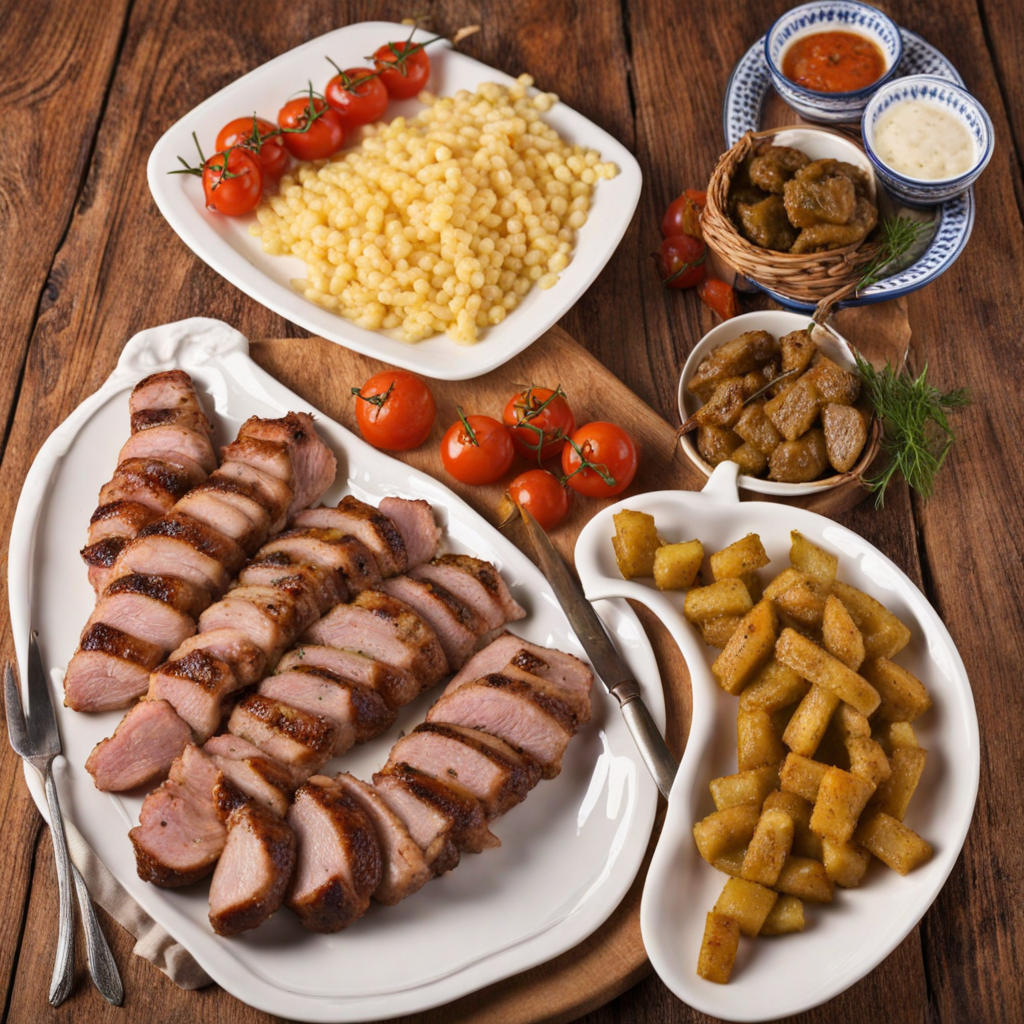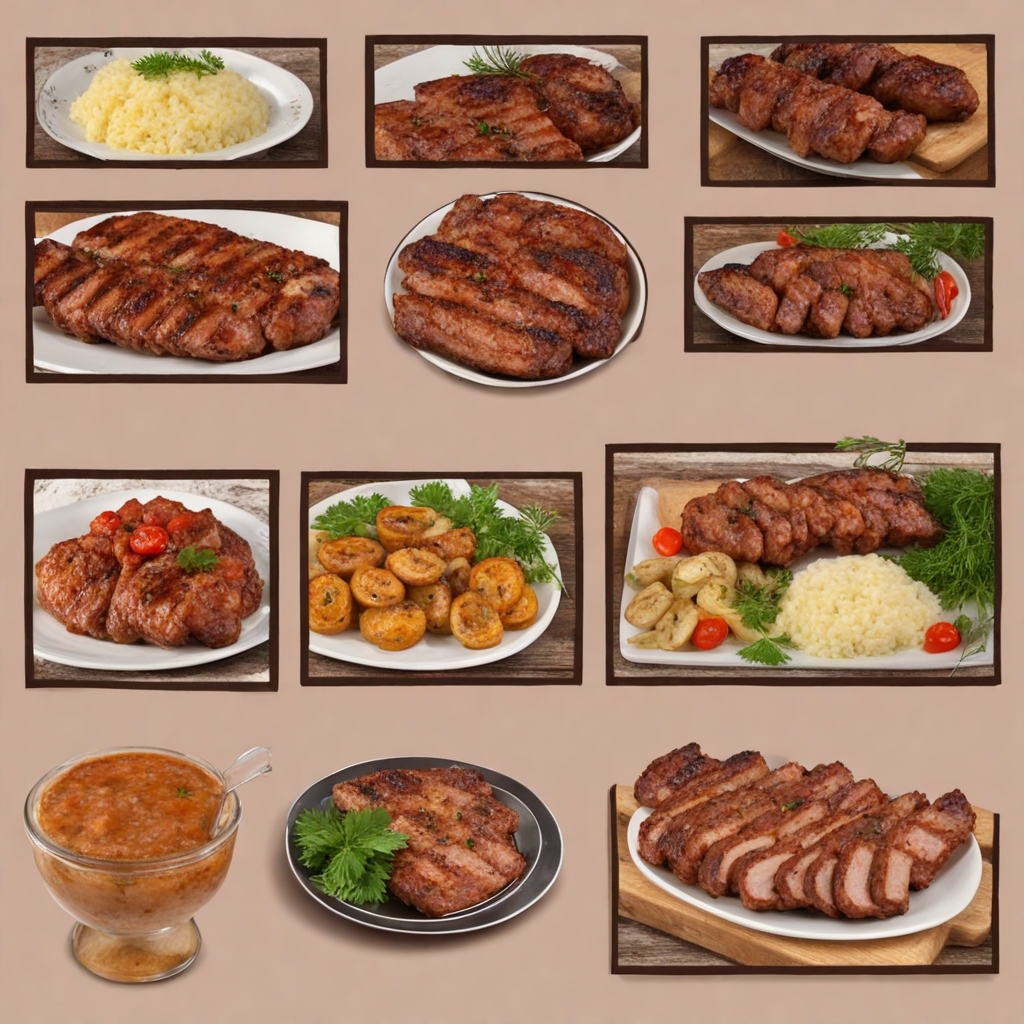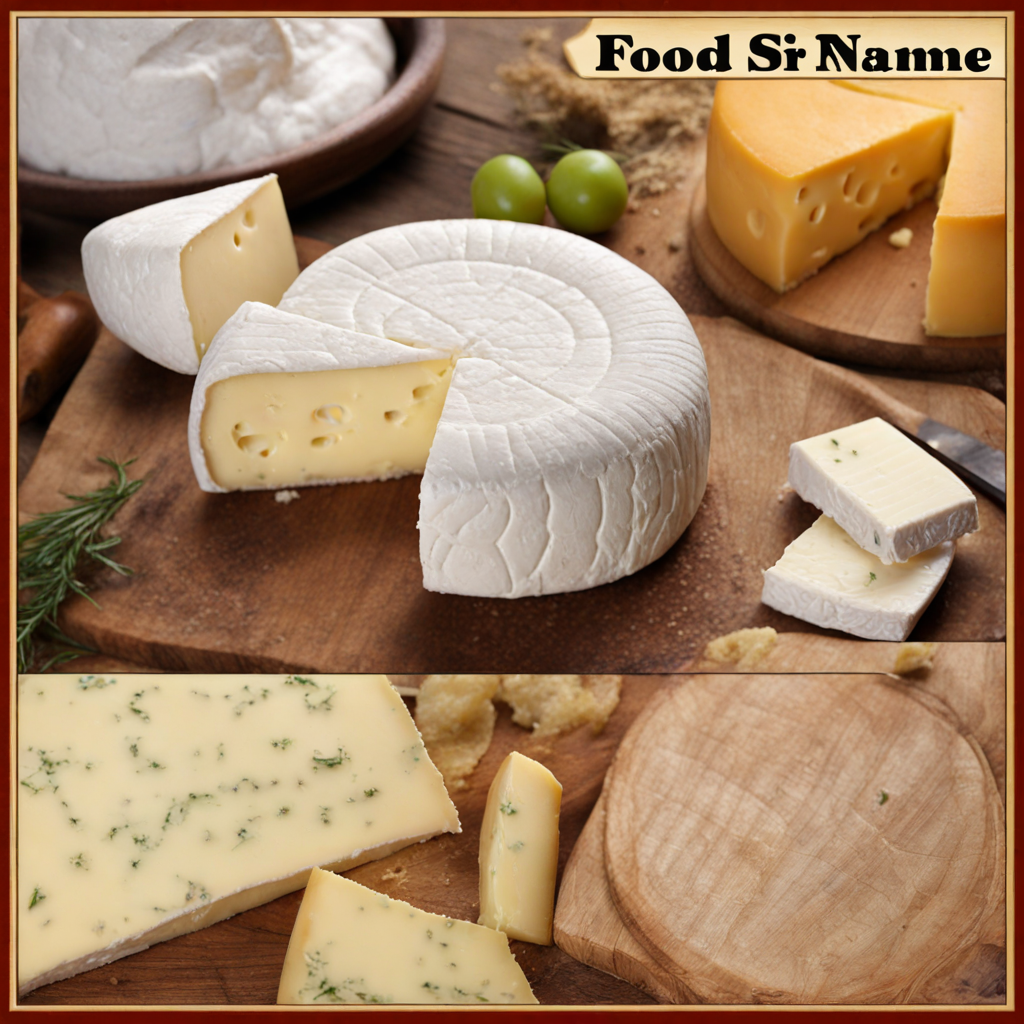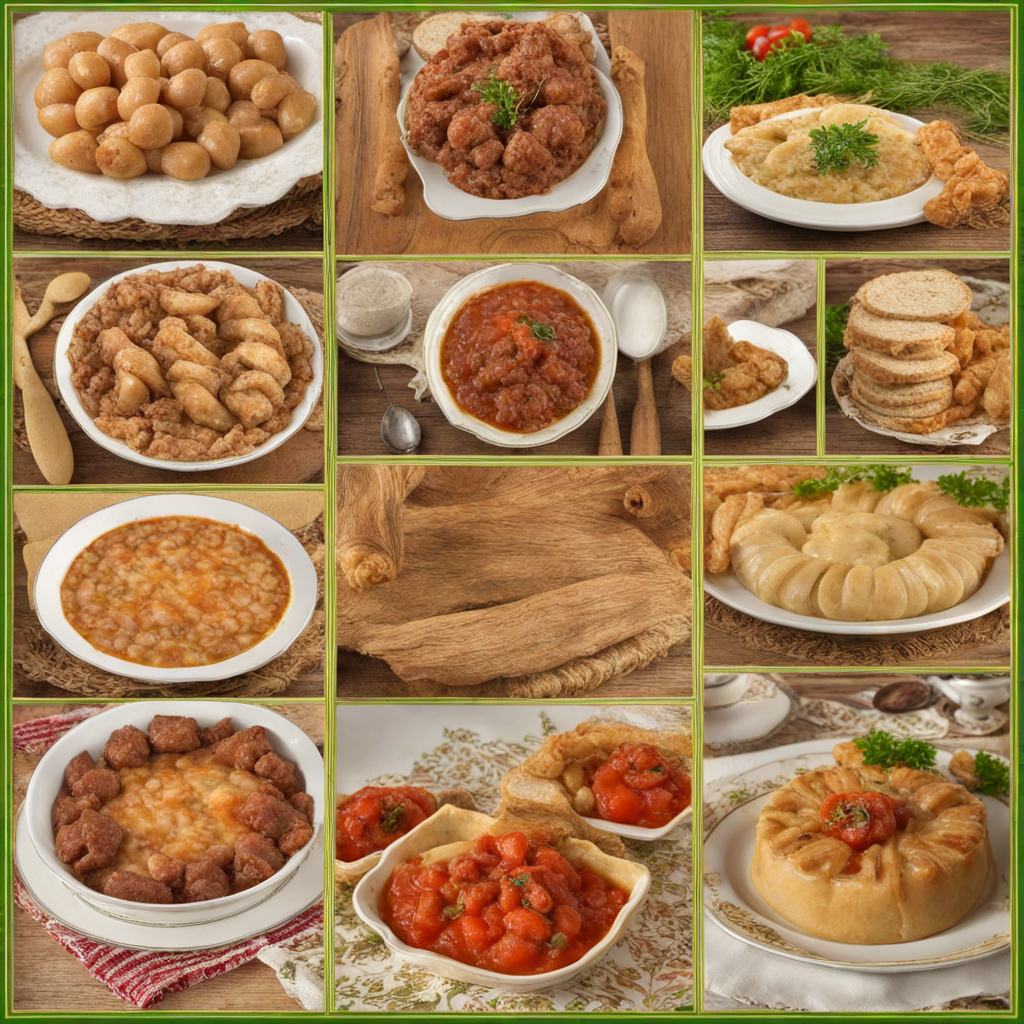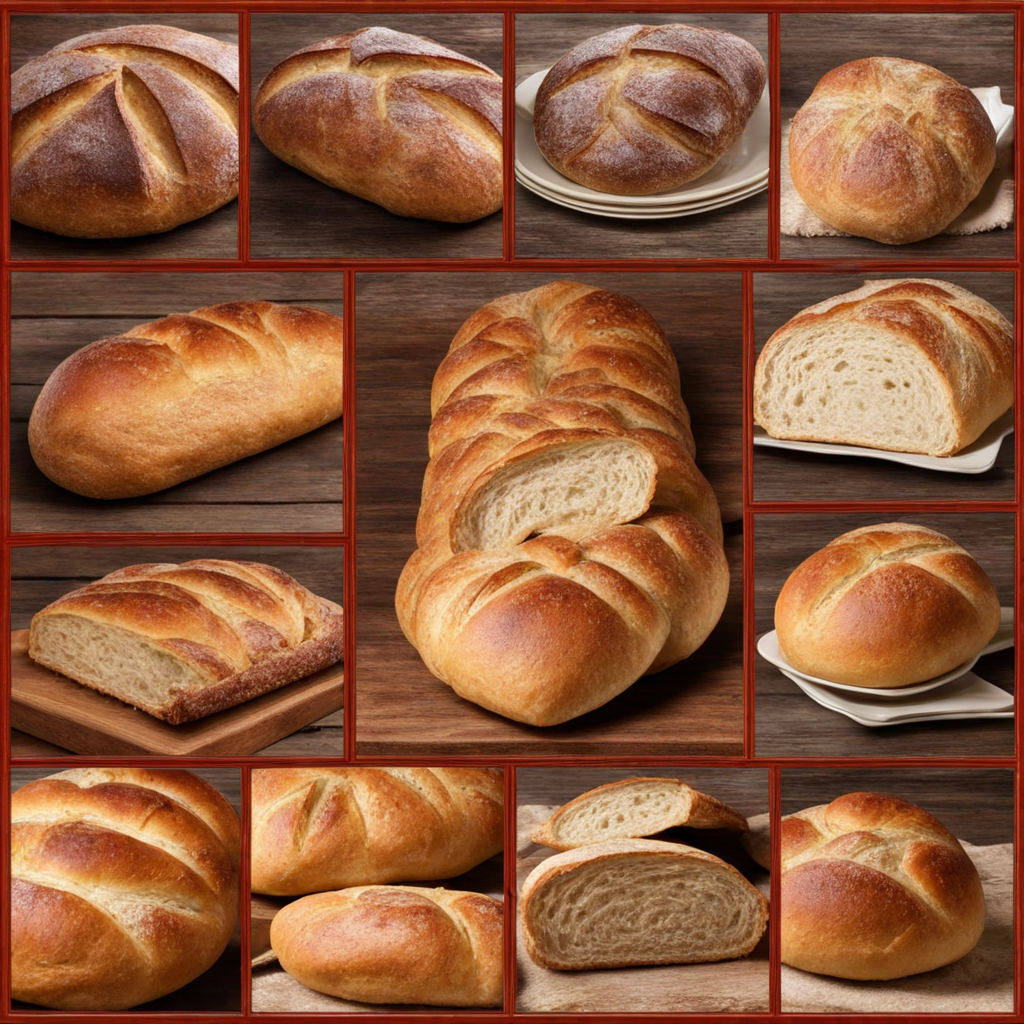Vesalica
Vesalica is a traditional Serbian dish that showcases the rich culinary heritage of the region. This delightful food is a type of savory pastry made from thin layers of dough, which are expertly filled with a mixture of finely minced meat, typically pork or beef, combined with aromatic herbs and spices. The dough is rolled out to a paper-thin consistency, allowing for a crispy texture once baked. As you bite into it, the flaky layers give way to a juicy and flavorful filling, making each mouthful a delightful experience of contrasting textures and tastes. What makes Vesalica truly unique is its seasoning. The meat mixture is often infused with local spices such as paprika, garlic, and black pepper, which lend a distinctive flavor profile that is both rich and comforting. The use of fresh herbs, like parsley or dill, adds a refreshing note that balances the hearty filling. Some variations may also include a touch of cheese or vegetables, enhancing the overall depth of flavor and creating a more complex taste experience. Traditionally served as a snack or a light meal, Vesalica is perfect for sharing among friends or family. It is often enjoyed with a side of yogurt or a simple salad, which complements its richness. The dish embodies the spirit of Serbian hospitality, inviting you to savor its warmth and flavor in a communal setting. For those seeking a new taste adventure, Vesalica is a delicious gateway to the heart of Serbian cuisine.
How It Became This Dish
The History of Вешалица: A Serbian Culinary Delight #### Origins and Etymology The dish known as Вешалица (Vešalica) is a cherished staple of Serbian cuisine, embodying the rich agricultural heritage and culinary traditions of the region. The name "Vešalica" translates to "hanger" in English, a term that reflects its traditional preparation method. This dish typically features marinated meat—most commonly pork—skewered and grilled, often accompanied by a medley of vegetables. The origins of Vešalica can be traced back to the rural households of Serbia, where farming communities relied heavily on local produce and livestock. Historically, the dish has its roots deeply embedded in the rural lifestyle of the Serbian people. It is believed that the technique of grilling meat on skewers dates back to ancient times when early Slavs would roast meat over open fires. This method aligned with their nomadic lifestyle, as it allowed for a quick and efficient way to cook meat while on the move. Over time, as agriculture developed and settled communities emerged, the dish transformed into a beloved part of the culinary landscape, retaining its rustic charm. #### Cultural Significance Vešalica holds a special place in Serbian culture, symbolizing hospitality and communal gatherings. It is not merely a dish to be consumed; it is an experience that brings people together. Traditionally served at family gatherings, festivals, and celebrations, Vešalica is often associated with the warmth of home-cooked meals, where family and friends gather around the grill, sharing stories and laughter. In the context of Serbian festivities, Vešalica often makes an appearance during Slava, a Serbian Orthodox tradition celebrating the patron saint of a family. During this occasion, families prepare various dishes, and the grilled Vešalica is a popular choice, showcasing the culinary prowess of the host. The preparation of Vešalica can often become a communal activity, with multiple generations participating in the marinating and grilling process, further strengthening family bonds and cultural identity. #### Development Over Time As the centuries progressed, Vešalica has evolved, influenced by various cultural exchanges and regional ingredients. The Ottoman Empire’s presence in the Balkans introduced new spices and cooking techniques, which gradually found their way into Serbian cuisine. The use of spices, including paprika and garlic, became more prevalent, giving the dish additional layers of flavor. This blend of culinary traditions highlights the adaptability of Serbian food culture, which has continuously absorbed influences while maintaining its unique identity. In the 20th century, with urbanization and globalization, the methods of preparing Vešalica began to change. The traditional outdoor grilling over open flames started to give way to modern cooking techniques, such as using gas grills and ovens. However, the essence of the dish remained intact, as people sought to recreate the authentic flavors of their heritage, often using family recipes passed down through generations. The rise of barbecue culture in Serbia also contributed to the popularity of Vešalica. In recent years, it has gained recognition beyond family gatherings and local festivals, becoming a popular item on restaurant menus and an essential part of food festivals throughout the country. This newfound prominence has allowed chefs to experiment with the dish, incorporating contemporary culinary techniques while respecting its traditional roots. #### Ingredients and Preparation The preparation of Vešalica is a labor of love, and its ingredients are key to achieving the authentic flavor. The primary component is pork, typically from the shoulder or neck, which is marinated in a mixture of oil, vinegar, garlic, and a blend of spices. While some recipes may vary, the essence of the marinade remains consistent, highlighting the natural flavors of the meat. Once marinated, the meat is skewered along with seasonal vegetables such as bell peppers, onions, and zucchini. The skewers are then grilled over an open flame or charcoal, allowing the meat to develop a smoky char while remaining juicy and tender. The dish is often served with traditional sides such as homemade bread, fresh salads, and local cheeses, creating a feast that is both hearty and satisfying. #### Modern Interpretations and Global Influence In recent years, the diaspora of Serbian communities around the world has contributed to the globalization of Vešalica. Chefs and home cooks alike have begun to adapt the dish, merging it with other culinary traditions. In cities with significant Serbian populations, such as Chicago and Toronto, Vešalica has found its place in the multicultural food scene, often appearing at Serbian restaurants and food festivals that celebrate Balkan cuisine. The rise of social media has also played a crucial role in popularizing Vešalica. Food bloggers and influencers have taken to platforms like Instagram and TikTok to share their experiences with Serbian cuisine, showcasing the beauty of Vešalica and its preparation. This online presence has sparked interest among younger generations, encouraging them to explore their culinary heritage and experiment with traditional recipes. #### Conclusion Vešalica is more than just a dish; it is a reflection of Serbian culture, history, and community. From its humble beginnings as a rustic meal prepared by rural families to its modern interpretations in urban restaurants, Vešalica has maintained its significance as a symbol of togetherness and celebration. As the world continues to evolve, this beloved dish remains a testament to the enduring power of food to connect people across generations and cultures. In Serbia, whether enjoyed during a festive gathering or at a local eatery, Vešalica is a reminder of the rich tapestry of flavors and traditions that define Serbian cuisine. As it continues to adapt and thrive in an ever-changing culinary landscape, Vešalica stands as a delicious bridge between the past and the present, inviting everyone to partake in its savory legacy.
You may like
Discover local flavors from Serbia


